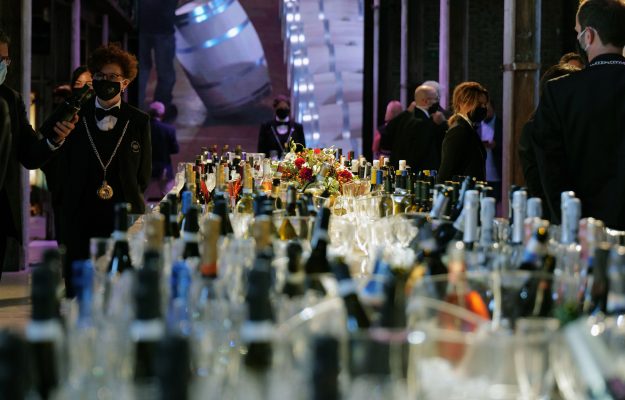In a country where the ecological transition “is necessary”, as stated by Prime Minister Draghi, the world of wine cooperatives - a pillar of Italian wine made up of 423 organizations producing 58% of the country’s total wine production, with a turnover of 5 billion euros in production and a constantly evolving path in terms of quality, internationalization of markets and research and experimentation in the vineyard - is doing its part by embracing sustainability, which, among other things, increasingly accompanies consumer choices. Thus, 59% of wine-growing co-ops have already reduced the use of chemical inputs, 52% have reduced waste and made the most of by-products, and 51% have increased organic production in a context of organic vineyards that has more than doubled in ten years and in which Italy is the European leader with a surface area of 17.8%, compared to 14.9% in Spain and 14.7% in France. Moreover, 62% of wine-growing co-ops say they are in favor of accelerating the ecological transition and agriculture 4.0 over the next two to three years. These data emerge from the Nomisma Wine Monitor report, at the center of the “Vivite” talk organized in Rome by the Wine Sector of the Alliance of Cooperatives, which shows that sustainability is increasingly a “mantra” also in consumer choices. In Italy, one in ten regular wine drinkers has bought sustainable wine in the last year, according to the Nomisma Wine Monitor report. In addition, one Italian in four claims to have noticed, on the shelves of the shops they shop in or in the restaurants/wine bars they frequent, a wine that has logos on the label identifying sustainability certification or other green features. And eight out of ten Italians are willing to spend more to have a bottle of wine certified sustainable, also because 38% of those interviewed believe that sustainable wine has superior organoleptic qualities. “And this is no small thing”, Denis Pantini, head of agri-food and Wine Monitor Nomisma, pointed out when illustrating the data, “considering that until recently organic wine was thought to be of inferior quality”. But when is a wine sustainable for consumers? When it is produced - the report highlights - minimizing the use of fertilizers and pesticides (69%), consuming less water and energy (55%), or when it has eco-friendly packaging (50%) and protects workers’ rights (47%).
“Sustainability is not a trend”, said Luca Rigotti, coordinator of the wine sector of Alleanza Cooperative Agroalimentare, as well as head of CopaCogeca and president of Mezzacorona, an example of excellence in Italian and Trentino wine cooperation, “and the cooperative instrument is particularly suited to this new challenge, not least because it has the possibility of acting on the various stages of the supply chain. Our companies certainly need to be dynamic and they need the resources provided by the NRP. It is up to us to take advantage of the opportunities offered to us”.
The “Vivite” talk, hosted by Tg1 journalist Anna Scafuri, focused on the challenges thrown up by the “Farm to Fork” strategy and the opportunities offered by the NRP, and in particular on the organizational and economic weight that this “green” path set by Europe may entail for wineries. Among the speakers at the talk, Stefano Laporta, president of Ispra-Istituto Superiore per la Protezione e Ricerca Ambientale - underlined how “ecological transition is a process that cannot be achieved in a short time, the objectives to be reached are linked to European deadlines. It is a necessary and inevitable process that has sustainability as its red line. It is not only an issue of environmental protection, but a balance between different needs. There is a need to integrate the agricultural part with the environmental part, otherwise, the objectives set will not be reached”. For Angelo Frascarelli, president of Ismea, “there will be no new costs for agricultural companies from this ecological transition. A transition that, among other things”, Frascarelli added, “is not asked of us by the EU but by citizens and consumers. Innovation, which is the future and sustainability, certainly has a cost for companies, but especially at the beginning of the process, because then the costs tend to decrease more and more. So we will be more sustainable without decreasing production and incomes”. According to Alessandro Monteleone, Crea’s first researcher, “research in the agri-food sector must be promoted and transferred, and the opportunities for synergies must be seized between the CAP and the NRFP, which are fundamental on the path to sustainability”. According to journalist and food and wine critic Paolo Massobrio, “sustainability is not an uphill climb because young producers believe in it, in the wake of the “green” avant-garde of the Millennials that began abroad and then moved to Italy. In the re-established city-countryside relationship that we witnessed during the lockdown, cooperative enterprises can represent a vanguard”. For Gian Marco Centinaio, Undersecretary for Agriculture with responsibility for wine, the “green” strategy designed by Europe as a whole has its criticalities, “because we must realize that if we reduce the amount of land cultivated and do real organic farming, we will certainly encounter tensions between those who want to do traditional agriculture and what Europe says instead. Will we manage? Yes, because we have given our membership and, in order to have the funds available, we have to adapt to what is imposed by Europe”. However, I ask Europe for reciprocity”, Centinaio added, “because if we ask for the environment to be respected, we cannot then allow products to be imported from other countries where, in the end, nothing is sustainable. We need the same rules. Otherwise, who would benefit from producing in Europe? Nobody!”. Giorgio Mercuri, president of the Alliance of Agri-Food Cooperatives, told WineNews: “Sustainability is a path that, like all new things, has a cost, but it is a path that can be followed, and the cooperative world can do a lot, we can provide training and help with investments in innovation. It is an important challenge, the same challenge that our grandparents took on with mechanization, and today we want to take it up with digitalization, in order to produce more and provide an increasingly sustainable product”.
The Nomisma Wine Monitor study illustrated at Vivite also focused on the market scenario, highlighting the boom in wine e-commerce, “a channel that is now essential for wineries”, as Pantini noted, which, thanks to the onset of the pandemic scenario, has seen a 151% jump in online sales by large-scale retail chains plus Amazon in 2020 compared to the previous year. “And it’s not a flash in the pan, rather a trend that will consolidate”, Pantini stressed, “because in the first half of this year, compared to the same period in 2020, we already see an upward trend of 310%”. And as regards the health of exports, penalized by the pandemic (-2% in 2020 compared to 2019), after years of running, there is a consistent recovery underway - highlighted the Nomisma study - with total wine exports in the first half of the year at 3,305 million euros, for an increase over the same period last year of 15%. But above all with an increase of 11% over the same period in 2019, which shows that, in addition to the technical rebound, “the growth recorded in recent years is continuing”, stressed Pantini, in releasing the forecast that “exports at the end of 2021 will total more than the 6.4 billion recorded in 2019”.
Copyright © 2000/2025
Contatti: info@winenews.it
Seguici anche su Twitter: @WineNewsIt
Seguici anche su Facebook: @winenewsit
Questo articolo è tratto dall'archivio di WineNews - Tutti i diritti riservati - Copyright © 2000/2025









































































































































































































